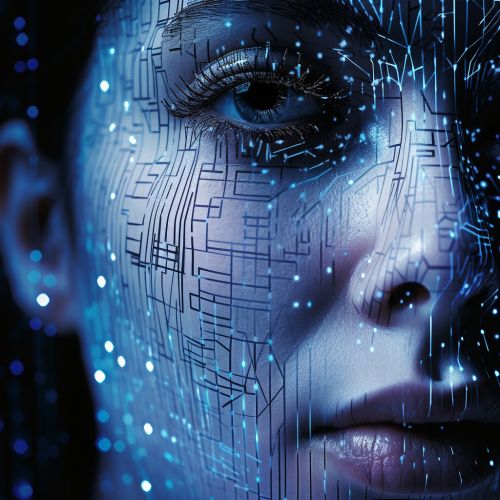Face Recognition
Overview
Face recognition is a subfield of AI that involves the identification of individuals based on their facial features. This technology has seen significant advancements in recent years, with applications ranging from security and surveillance to social media and entertainment. The process involves the use of algorithms and ML techniques to analyze, compare, and identify human faces.


History
The concept of face recognition dates back to the 1960s, with the development of the first semi-automated system for face recognition. However, it wasn't until the advent of ANNs and the proliferation of digital images that face recognition technology truly began to evolve.
Technology
Face recognition technology primarily relies on two types of systems: geometric, which looks at distinguishing features, and photometric, which is a statistical approach that distills an image into values and compares these values with templates to eliminate variances.
Geometric Systems
Geometric systems involve the measurement and comparison of facial features, such as the distance between the eyes, nose, mouth, and jaw edges. These measurements are then used to create a facial signature, which is a complex mathematical representation of the face.
Photometric Systems
Photometric systems use a more statistical approach, analyzing the face as a whole and creating a faceprint. This faceprint is then compared to a database of known faces to find a match.
Applications
Face recognition technology has a wide range of applications in various sectors. Some of the most common uses include security and surveillance, identity verification, and personalized marketing.
Security and Surveillance
In the field of security and surveillance, face recognition technology is used for identifying individuals in crowds, tracking persons of interest, and enhancing the security of sensitive areas.
Identity Verification
Face recognition is also used for identity verification in areas such as banking and mobile device security. It provides a secure and convenient method for user authentication.
Personalized Marketing
In the realm of marketing, face recognition technology can be used to deliver personalized advertisements based on the age, gender, and even mood of the consumer.
Challenges and Controversies
Despite its potential benefits, face recognition technology also poses significant ethical and privacy concerns. Issues such as consent, bias, and accuracy have been widely debated in the context of this technology.
Consent
One of the primary concerns with face recognition technology is the issue of consent. In many cases, individuals are not aware that their faces are being scanned and analyzed.
Bias
Another concern is the potential for bias in face recognition systems. Studies have shown that these systems can have higher error rates for certain demographic groups.
Accuracy
The accuracy of face recognition technology is also a significant concern. While the technology has improved over the years, it is still not 100% accurate, leading to potential misidentifications.
Future Directions
The future of face recognition technology is likely to see further advancements in accuracy and applicability. However, it is also expected that the ethical and privacy concerns surrounding the technology will continue to be a significant focus of discussion and regulation.
